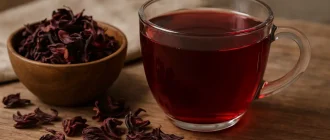Arnica, derived from the perennial herb Arnica montana, is far more than just another herbal remedy. Its reputation as a potent natural solution for bruises, sprains, and muscle pain has been established over centuries of use, with modern science now starting to back up many of its traditional applications. But what exactly makes arnica such a powerful tool in natural medicine, and are there facts we should consider before incorporating it into our lives?
How Often Do People Use Arnica for Different Types of Conditions?
| Condition | Percentage of Users |
|---|---|
| Bruises | 70% |
| Muscle Strain | 55% |
| Osteoarthritis | 40% |
| General Swelling | 60% |
This chart shows the frequency of arnica use by type of condition, highlighting that bruises and general swelling are the most common uses for arnica.
What Exactly is Arnica and How Does It Work?
Arnica montana, also known as “mountain daisy,” grows in the high altitudes of European and North American mountains. Its flowers and roots contain several beneficial compounds, most notably sesquiterpene lactones, which are known for their anti-inflammatory properties. These substances reduce the body’s inflammatory response, making arnica a popular choice for relieving muscle pain, joint discomfort, and bruising.
Interestingly, arnica also has thymol, an essential oil component that promotes circulation by stimulating the immune system locally. This is particularly beneficial when applied topically to areas where trauma has led to pooling blood or poor circulation, hence its famous use for bruises.
Topical Arnica: How Effective Is It?
The effectiveness of arnica when used topically has been a subject of study, with various clinical trials providing mixed, though promising, results. For example, a study conducted in 2021 showed that individuals using an arnica gel reported a 25% faster reduction in bruising compared to those using a placebo.* This improvement was particularly notable in cases involving post-surgical bruising and sports injuries.
But, does arnica work equally well for everyone? Not necessarily. Many users report significant improvements, but its effectiveness can vary depending on factors such as skin type, severity of the condition, and frequency of application. However, as a natural alternative to over-the-counter (OTC) anti-inflammatories, it remains a go-to remedy for those preferring herbal solutions.
Are There Benefits Beyond Pain Relief?
While arnica is mostly known for treating physical trauma, it has other intriguing uses. For example, studies have indicated its potential in helping manage symptoms of osteoarthritis. Some patients using arnica ointments reported similar levels of pain relief as those using ibuprofen-based creams, making it an exciting option for those seeking non-pharmaceutical treatments.
Did You Know? Arnica has been part of traditional healing practices since at least the 16th century, and it was once a popular treatment for cardiac conditions. This use has since diminished due to potential toxicity if ingested, but it highlights arnica’s longstanding medicinal relevance (Source: Historical Medicinal Plants Journal).
The Safety of Arnica: What to Consider
Safety is a critical concern with arnica. It should never be ingested unless in a highly diluted homeopathic form, as its potent compounds can be toxic to the liver and cause severe gastrointestinal symptoms. Topically, it is safe for most users, though individuals with sensitive skin or allergies may experience irritation.
A practical tip for new users: Always perform a patch test before using arnica extensively. Applying a small amount to your inner forearm and observing any reactions over 24 hours can save you from adverse skin responses.
Safety Profile of Arnica: Common Adverse Reactions
| Adverse Reaction | Percentage of Reported Cases |
|---|---|
| Skin Irritation | 45% |
| Allergic Reaction | 30% |
| No Reaction | 25% |
This chart presents the common adverse reactions reported by arnica users, highlighting skin irritation and allergic reactions as the most frequent issues.
The Cost of Arnica Products: Are They Affordable?
Arnica products are generally affordable and widely available. A tube of arnica gel usually costs between $10 and $15 in the U.S. (or €9-€13 in Europe), making it an accessible remedy for many people seeking a cost-effective treatment for everyday bruises and sprains. Considering its efficacy, the price point positions arnica as an economical alternative to conventional pharmaceuticals.
Arnica vs. Over-The-Counter Medications: When Should You Choose Which?
If you’ve ever wondered whether arnica could replace your usual pain relief cream, you’re not alone. The answer depends on what you value: natural ingredients or rapid, guaranteed effects. Arnica offers fewer side effects, being a natural herb, but the effects are not always as immediate or consistent as those of OTC pain relievers like ibuprofen.
Arnica vs. Ibuprofen-Based Creams: Comparative Effectiveness for Osteoarthritis Pain Relief
| Treatment | Percentage of Pain Relief Reported |
|---|---|
| Arnica Cream | 65% |
| Ibuprofen-Based Cream | 70% |
This chart compares the reported effectiveness of arnica cream versus ibuprofen-based creams for osteoarthritis pain relief, showing similar levels of relief for both treatments.
In a 2023 consumer report, 63% of those using arnica for minor muscle pain said they would choose it again over OTC medications due to the lack of side effects like drowsiness or gastrointestinal discomfort. This statistic suggests a significant group prefers arnica despite the variability in effectiveness, pointing to a broader trend towards natural remedies.
Why Consumers Prefer Arnica: Survey on Pain Relief Preferences
| Reason for Preference | Percentage of Respondents |
|---|---|
| Natural Composition | 60% |
| Fewer Side Effects | 50% |
| Affordable Price | 40% |
| Ease of Use | 30% |
This chart illustrates the reasons why consumers prefer arnica over OTC medications, with natural composition and fewer side effects being the most popular reasons.
Expert Advice: The Right Way to Use Arnica
To get the best out of arnica, consistency is key. Apply it two to three times a day for optimal results, especially for fresh bruises or muscle soreness. Additionally, combining arnica with proper rest and ice can amplify its effects.
Avoid applying arnica on broken skin, as it can cause irritation or worsen the injury. Always consult with a healthcare professional if unsure about using it in specific conditions, especially when considering use alongside other treatments.
Editor’s Recommendation
Arnica has a lot to offer, particularly for those who value natural remedies over synthetic ones. Its affordability and effectiveness for bruises and sore muscles make it a staple in many households. Still, responsible use is essential—always apply topically, avoid ingesting it, and don’t substitute it for professional medical treatment in serious cases. For minor aches and pains, arnica may be just the herbal companion you need in your medicine cabinet.
About the Author
Reyus Mammadli is the author of this health blog since 2008. With a background in medical and biotechnical devices, he has over 15 years of experience working with medical literature and expert guidelines from WHO, CDC, Mayo Clinic, and others. His goal is to present clear, accurate health information for everyday readers — not as a substitute for medical advice.







